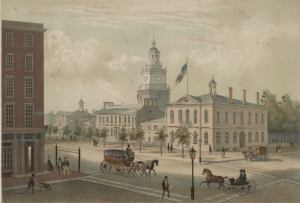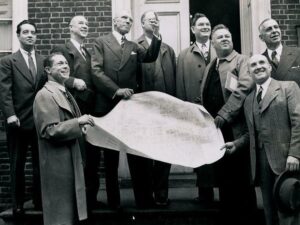
Treaty Negotiations with Native Americans
From the arrival of Europeans in the seventeenth century through the era of the early republic, treaties were an important tool in diplomacy between native nations and colonial Pennsylvania and later the nascent federal government. Treaties followed indigenous modes of diplomacy, into which colonists introduced, and imposed, the signing of treaty documents. However, treaty councils did not always ...
















































